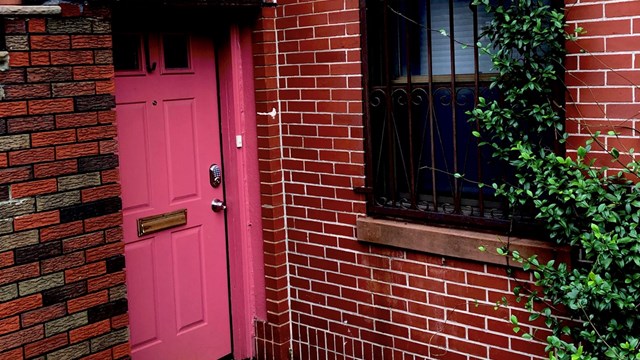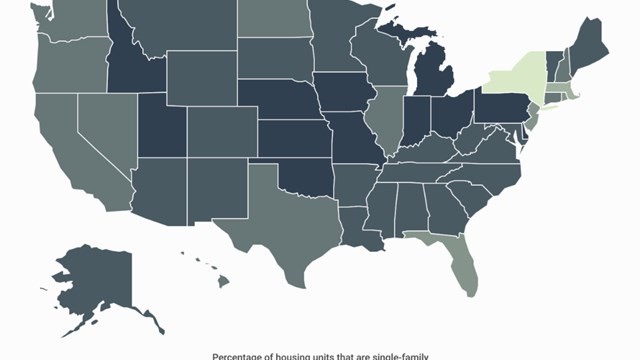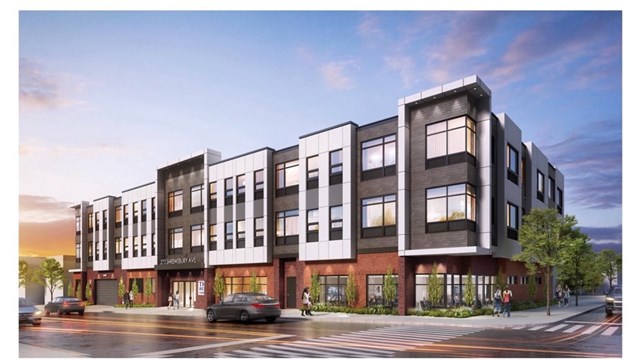Two seemingly opposite dynamics are both influencing today’s real estate market—and its impact on co-ops and condos. On one hand, people all over the United States, including the greater New York area, are becoming more frugal, and learning how to do more with less. On the other hand, thousands upon thousands of wealthy people are streaming into Manhattan and parts of the outer boroughs, pursuing careers in finance, real estate, advertising, fashion, entertainment, corporate law and other high-profile professions.
We may be seeing the backside of the era of high-profile investment bank and real estate company failures and of huge layoffs—but does that mean the recession is actually over? What will happen in the future?
Cautious Optimism
Gary Malin, president of CitiHabitats in Manhattan, sees the mood in the market as “cautious optimism,” and many others in the industry seem to agree.
“The general consensus,” says Paul Purcell, co-founder of Manhattan-based Rutenberg Realty, “is that the market was relatively stable this past year. And the good news for New York City is that we had a market, unlike many places in the U.S.”
And in Manhattan says that his agents “are optimistic regarding 2012, as the final quarter of 2011 has seen an increase in sales volume. Consumer sentiment remains mixed, with confident foreign buyers investing in New York City, while many Wall Street types believing that the sky is falling.”
As for what the future will bring for the economy, Kirk Henckels, executive vice president of Manhattan-based brokerage Stribling & Associates, looks to the edgy European situation. “The demand [for condos and co-ops] is there, but there’s downward pressure because of the potentially terrible situation in Europe, combined with our own economy. It could go strongly either way.”
Others look closer to home, and wonder if there will be more layoffs in the pipeline—including on Wall Street. Many also believe that although there has been some job growth, it hasn’t been significant enough to offset the last few years' losses.
Michael Slattery, senior vice president of the Real Estate Board of New York (REBNY), however, points out that New York State has strongly recovered from the recession and sees more continued growth than many parts of the country. “This will help to offset somewhat the uncertainty nationally and globally,” he says.
Other Factors to Consider
The political situation and the upcoming presidential election also may have an impact on the New York metro area’s real estate market. Uncertainty always makes buyers more cautious in making decisions—it’s human nature.
Tracking the market over the past year, Malin says that economic factors keep more people in the city’s rental market, as opposed to deciding to buy a condo, co-op or a house. “On the sales front, prices were flat but volume increased,” he says.
However, in part due to the weak dollar and increased international investment, “the high-end sales market has performed incredibly well.” The move that had the biggest impact on the city’s real estate market, Malin says, is the fact that “lenders tightened the approval criteria for those looking for mortgages.”
How does the market compare with the boom of the mid-2000s? One answer comes from Purcell, who hopes people are learning that, “Our homes should not be viewed as speculative or highly liquid. We were so off-track with fast appreciation. It looked too easy to make money on a home, and too many jumped on that bandwagon.”
On that subject, this reporter remembers that in the 1980s and 1990s, someone who bought a home not to live in but to hold onto and eventually sell at a higher price was viewed suspiciously, as someone who wasn’t really contributing to the economy. In the mid-2000s, by contrast, the practice of “flipping” had become so commonplace and accepted that there is a hit cable TV series called “Flip This House.”
Malin basically agrees with Purcell. “The industry and the public have taken a more cautious approach. Lending restrictions have tightened, and in general, people have sobered up,” he says. “We are back to the market’s fundamentals.”
Fashionably Frugal?
Most all professionals agree that as a result of the crash and its aftermath, extravagant spending is not as popular as it once was. People, particularly younger high-powered professionals who had earlier thought the boom would never end, have learned the value of saving for a rainy day.
Heddings puts it this way: “Frugal is the new black!” Not only is the average homebuyer more cautious about what he or she will spend on housing, he says, but many owners have sold their units and decided to rent instead.
At the high end of the market, however, big spending and “trophy” buying has definitely come back. As Henckels, whose company specializes in luxury real estate says, “People with money will only deny themselves for so long.” Also, he says, “If you have kids who are getting older and going away, you’ve got the money and at some point you’re going to spend it.”
Both co-ops and condos were popular last year. Remember, there are still more co-ops than condos in the city. But over time, the pros say that this will change.
Almost all of the apartment developments going up nowadays that aren’t rentals are condos. Very few, if any, co-ops are being built—the days when one rental building in a neighborhood after another “went co-op,” and the gossip about “red herrings,” “non-eviction plans” and “black books,” has been over for more than 20 years.
And, let’s face it—the idea of having your application accepted or rejected by a board can be intimidating to buyers.
“There are fewer usage restrictions [in condos] and it’s easier for potential purchasers to qualify for that type of apartment,” says Malin. “Plus, people like the idea of owning real property, not shares in a corporation. Buying a condo is also much easier for international investors.”
Giving Them What They Want
What are buyers looking for in terms, or amenities, special features in security? REBNY’s third-quarter survey gave real numbers. When brokers were asked to report what features and amenities their clients valued most, 28 percent valued laundry facilities on site or in the unit; 18 percent considered an on-site gym, spa or fitness center a top priority; and 18 percent viewed private storage space the most valuable feature.
Other popular features, says Malin, include private outdoor spaces, like terraces or balconies; communal spaces, like roof decks; and, in some cases, hotel-style services like concierges.
As far as neighborhoods are concerned, professionals interviewed for this article agreed that tried-and-true desirable neighborhoods, such as the Upper East Side, Upper West Side, Midtown and Greenwich Village, remain desirable.
And a new dynamic may be coming into play. “One of Mayor Bloomberg’s main legacies,” says Henckels, “has been to revive the New York shoreline and waterfront neighborhoods. Even in Brooklyn, it’s amazing.”
If buyers who can’t afford the Upper West Side or Upper East Side might want to take advantage of the softer market, Heddings names Harlem, Washington Heights-Inwood, and parts of Hell’s Kitchen and Murray Hill as providing some “interesting opportunities.” Neighborhoods like these, in addition to Greenpoint/Williamsburg and Fort Greene in Brooklyn, began to attract attention even before the downturn.
All in all, says Slattery, “If [buyers] are looking for a place to live, they should find the neighborhood that appeals to them and search for a property they can afford. If they are looking to make an investment, then they need to determine the level of risk they are willing to accept and how long they want to hold on to the investment.”
Looking Ahead
What’s the forecast for the city in general in terms the condo/co-op market, real estate, and the economy in general?
It’s hard to say, say the pros. The stock market and the unemployment rate fluctuate up and down. But many people expect more job creation in the next few years, which would affect the market positively.
Heddings predicts that “the market will likely remain stable through 2012 as inventory fluctuates on the low end of availability. Of course, if interest rates begin to climb, we could see a decrease in prices, but what would likely happen is that inventory would shrink further, keeping prices stable until rates approached a level that buyers perceived to be prohibitive to purchasing. Then prices would have to soften.”
Even though there aren’t that many new development projects in the pipeline, at least there are some. The days when developers stopped in mid-construction because they lost financing, and there were hundreds of unfinished condo buildings throughout the five boroughs, seem to be about over. Indeed, some of those stalled projects are now nearing completion, often with new financing and new owners.
No matter what happens, New York, especially Manhattan, will continue to be an extremely attractive place to live. It’s one of the capitals of the world, along with London, Paris, Hong Kong and a handful of other cities.
The city has certainly come up in the world since this writer came of age in the 1970s, when the Upper West Side was still considered somewhat dangerous; the subways were scarred with graffiti; parts of the Lower East Side, Harlem and Washington Heights were ruled by drug-dealing gangs; and Park Slope presented a bargain for ambitious young professionals who wanted to rehabilitate rundown brownstones.
“Manhattan is safe, and baby-boomers looking for an active, maintenance-free lifestyle are taking notice,” says Malin. “Additionally, there are numerous public works projects that are poised to increase the quality of life for all New Yorkers, which will only add to the city’s appeal. It’s the Big Apple and everyone wants a bite.”
On the other hand, those who are starting out or who aren’t making that much money might find themselves pushed further out, to places like Astoria, Midwood, Washington Heights-Inwood and so on. “The recession didn’t have such an impact as to make the city that much more affordable,” says Heddings. “Manhattan is primarily an island for the wealthy, and I believe that trend will continue.”
Raanan Geberer is a freelance writer and a frequent contributor to The Cooperator.







Comments
Leave a Comment